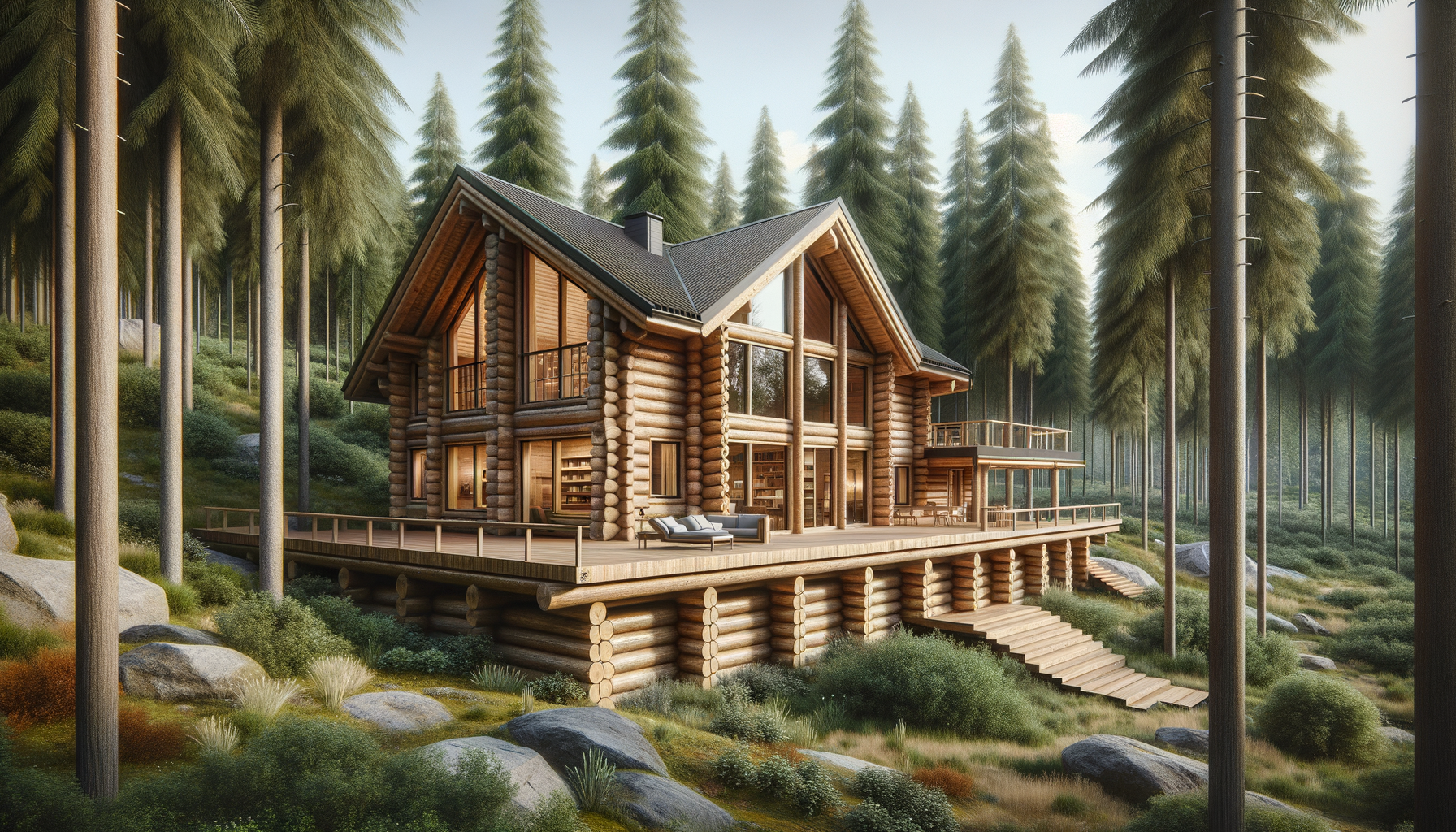The Rise of Prefab Log Cabins in Modern Homebuilding
In recent years, the concept of prefab log cabins has gained significant traction in the homebuilding industry. These structures combine the rustic appeal of traditional log cabins with the efficiency and innovation of modern prefabrication techniques. Prefab log cabins are constructed using pre-manufactured sections, which are then transported and assembled on-site. This method significantly reduces construction time and labor costs, making it an attractive option for many homebuilders.
The popularity of prefab log cabins can be attributed to several factors. Firstly, they offer a cost-effective alternative to traditional log cabin construction. The prefabrication process allows for better control over material costs and reduces waste, leading to more affordable pricing for consumers. Additionally, the speed of assembly means that homeowners can enjoy their new cabin in a fraction of the time it would take to build a traditional log cabin.
Another reason for the rise of prefab log cabins is their environmental benefits. Prefabrication often results in less waste and a smaller carbon footprint compared to conventional construction methods. Many manufacturers use sustainably sourced wood and eco-friendly materials, appealing to environmentally conscious consumers. As sustainability becomes an increasingly important consideration in homebuilding, prefab log cabins are well-positioned to meet these demands.
Design Flexibility and Customization
One of the standout features of modern prefab log cabins is their design flexibility. Unlike traditional log cabins that often adhere to a specific architectural style, prefab cabins offer a wide range of design options. Homeowners can choose from various layouts, sizes, and finishes to create a cabin that perfectly suits their needs and preferences.
Customization is a key selling point for prefab log cabins. Many manufacturers offer a selection of customizable features, such as window styles, roofing materials, and interior finishes. This allows homeowners to personalize their cabin to reflect their unique taste and lifestyle. Whether you prefer a rustic, traditional look or a sleek, modern design, prefab log cabins can accommodate a variety of aesthetic preferences.
Moreover, prefab log cabins can be easily adapted to different terrains and climates. This adaptability makes them suitable for various locations, from remote wilderness areas to suburban settings. The ability to customize and adapt these cabins ensures that they can meet the diverse needs of homeowners worldwide.
Efficiency and Speed of Construction
One of the most significant advantages of prefab log cabins is the efficiency and speed of construction. Traditional log cabin building can be time-consuming and labor-intensive, often taking months to complete. In contrast, prefab log cabins can be assembled in a matter of weeks, thanks to the pre-manufactured components that are ready for installation upon delivery.
This rapid construction process is particularly beneficial for those looking to build in remote or challenging locations. The reduced need for on-site labor and equipment minimizes the logistical challenges often associated with building in such areas. Additionally, the quicker build time means that homeowners can begin enjoying their new cabin sooner, making it an appealing option for those eager to settle into their new home.
The efficiency of prefab log cabins also extends to their energy performance. Many manufacturers incorporate energy-efficient features into their designs, such as high-quality insulation and energy-efficient windows, to ensure that the cabins are as sustainable and cost-effective as possible. This focus on energy efficiency not only reduces the environmental impact of the cabins but also lowers utility costs for homeowners.
Cost Considerations and Financial Benefits
Prefab log cabins offer several financial benefits that make them an attractive option for budget-conscious homebuilders. The streamlined construction process and reduced labor costs associated with prefab cabins often result in lower overall expenses compared to traditional log cabin construction. This cost-effectiveness makes prefab log cabins accessible to a broader range of consumers.
Additionally, the predictability of costs in prefab construction is a significant advantage. With traditional building methods, unforeseen expenses can arise during the construction process, leading to budget overruns. Prefab log cabins, on the other hand, typically come with a fixed price, providing homeowners with financial peace of mind.
Furthermore, the energy-efficient features often included in prefab log cabins can lead to long-term savings on utility bills. By reducing energy consumption, homeowners can enjoy lower heating and cooling costs, which can add up to significant savings over time. This financial benefit, combined with the initial cost savings, makes prefab log cabins a financially savvy choice for many.
The Future of Prefab Log Cabins
As the demand for sustainable and efficient housing continues to grow, the future of prefab log cabins looks promising. The combination of traditional aesthetics and modern construction techniques positions these cabins as a viable solution for contemporary homebuilding challenges. With ongoing advancements in prefabrication technology, we can expect even greater innovation in the design and construction of prefab log cabins.
One area of potential growth is in the integration of smart home technology. As more homeowners seek to incorporate technology into their living spaces, prefab log cabins can be designed to accommodate smart home systems, enhancing convenience and energy efficiency. This adaptability to modern technology ensures that prefab log cabins remain relevant in an ever-evolving housing market.
Moreover, as environmental concerns continue to influence consumer choices, the sustainable aspects of prefab log cabins will likely become even more appealing. Manufacturers are likely to continue refining their processes to minimize environmental impact, further solidifying the position of prefab log cabins as a sustainable housing option.
In conclusion, prefab log cabins represent a significant advancement in the homebuilding industry. Their blend of traditional charm and modern efficiency makes them a compelling choice for those seeking a unique and sustainable living space. As technology and consumer preferences evolve, prefab log cabins are well-equipped to meet the demands of the future.




Leave a Reply